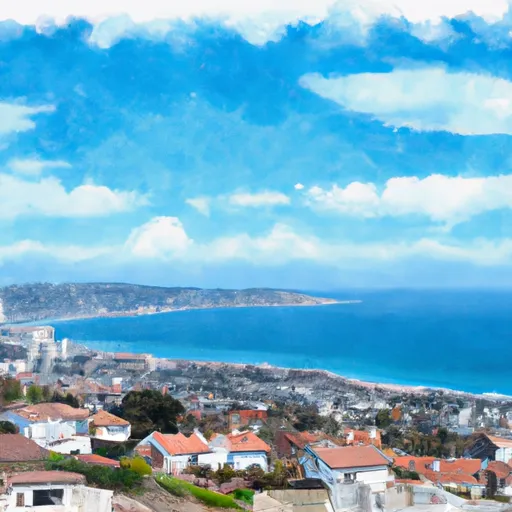-
 Snoflo Premium
Snoflo Premium
Get unlimited access to all our content
With no Ad interruptions! - Start Your Free Trial Login with existing account
Rancho-Palos-Verdes
Eden Index
Climate
9.0
•
Recreation
3.2
•
Community
7.6
•
Safeguard
6.6/10

Rancho Palos Verdes is a beautiful coastal city located in Los Angeles County, California. It boasts a Mediterranean climate characterized by mild, wet winters and warm, dry summers. The average annual temperature ranges from 57°F (14°C) to 73°F (23°C), providing residents and visitors with pleasant weather throughout the year.
Hydrologically, Rancho Palos Verdes is known for its stunning coastal cliffs and shoreline. The city overlooks the Pacific Ocean, offering breathtaking views and opportunities for outdoor activities such as hiking, whale watching, and beachcombing. The area is also home to several tide pools, where visitors can explore diverse marine life during low tide.
Rancho Palos Verdes is renowned for its extensive network of hiking trails and parks. The Palos Verdes Peninsula boasts numerous natural reserves, including the Abalone Cove Shoreline Park and Nature Preserve, where visitors can enjoy picnicking, snorkeling, and diving. The South Coast Botanic Garden is another popular outdoor destination, showcasing a wide variety of plants and is ideal for leisurely walks.
In conclusion, Rancho Palos Verdes offers a desirable Mediterranean climate, picturesque coastal scenery, and a plethora of outdoor recreational opportunities, making it an ideal destination for nature lovers and outdoor enthusiasts.
What is the Eden Index?
The Snoflo Eden Index serves as a comprehensive rating system for regions, evaluating their desirability through a holistic assessment of climate health, outdoor recreation opportunities, and natural disaster risk, acknowledging the profound impact of these factors on livability and well-being.
Climate Health Indicator (CHI): 9.0
Rancho-Palos-Verdes receives approximately
419mm of rain per year,
with humidity levels near 78%
and air temperatures averaging around
17°C.
Rancho-Palos-Verdes has a plant hardyness factor of
11, meaning
plants and agriculture in this region tend to thrive here all year round.
By considering the ideal temperature range, reliable water supplies, clean air, and stable seasonal rain or snowpacks, the Climate Health Indicator (CHI) underscores the significance of a healthy climate as the foundation for quality living.
A healthy climate is paramount for ensuring a high quality of life and livability in a region, fostering both physical well-being and environmental harmony. This can be characterized by ideal temperatures, reliable access to water supplies, clean air, and consistent seasonal rain or snowpacks.
Weather Forecast
Streamflow Conditions
Ventura-San Gabriel Coastal
Area Rivers
Ventura-San Gabriel Coastal
Snowpack Depths
Ventura-San Gabriel Coastal
Reservoir Storage Capacity
Ventura-San Gabriel Coastal
Groundwater Levels
Recreational Opportunity Index (ROI): 3.2
The Recreational Opportunity Index (ROI) recognizes the value of outdoor recreational options, such as parks, hiking trails, camping sites, and fishing spots, while acknowledging that climate plays a pivotal role in ensuring the comfort and consistency of these experiences.
Access to outdoor recreational opportunities, encompassing activities such as parks, hiking, camping, and fishing, is crucial for overall well-being, and the climate plays a pivotal role in enabling and enhancing these experiences, ensuring that individuals can engage in nature-based activities comfortably and consistently.
Camping Areas
| Campground | Campsites | Reservations | Toilets | Showers | Elevation |
|---|---|---|---|---|---|
| Dockweiler Beach RV | 117 | 45 ft |
Nearby Fishing
Catastrophe Safeguard Index (CSI):
The Catastrophe Safeguard Index (CSI) recognizes that natural disaster risk, encompassing floods, fires, hurricanes, and tornadoes, can drastically affect safety and the overall appeal of an area.
The level of natural disaster risk in a region significantly affects safety and the overall livability, with climate change amplifying these risks by potentially increasing the frequency and intensity of events like floods, fires, hurricanes, and tornadoes, thereby posing substantial challenges to community resilience and well-being.
Community Resilience Indicator (CRI): 7.6
The Community Resilience Indicator (CRI) recognizes that education, healthcare, and socioeconomics are crucial to the well-being of a region. The CRI acknowledges the profound impact of these elements on residents' overall quality of life. By evaluating educational resources, healthcare accessibility, and economic inclusivity, the index captures the essential aspects that contribute to a thriving community, fostering resident satisfaction, equity, and social cohesion.

